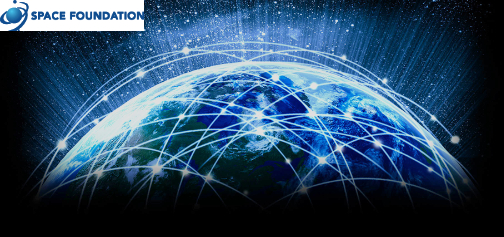
Across multiple fronts, the space industry heading into 2020 was the strongest in years, with gains in space industry jobs, new nations entering space, and record-level research and investor activity through International Space Station U.S. National Laboratory programs.
Those are among the new findings in The Space Report 2020, Quarter One, just released by Space Foundation.
More than 183,000 workers were employed in the U.S. space workforce at the end of 2019, according to the U.S. Bureau of Labor Statistics. Core employment, those jobs most closely aligned with the space industry and not the larger aerospace industry, rose to 141,520 jobs in 2019. This represents a 4.1% increase from the 135,930 private sector workers in 2018 and marks the third year in a row of increasing employment in this workforce and the highest level since 2012.

Some sectors saw significant gains in employment over the last five years. Together, the workforce supporting manufacturing of space vehicles, space vehicle propulsion units, and other space vehicle parts grew by nearly 20% over the past five years, adding more than 14,000 new employees. Other sectors experienced decline. Broadcast and wireless communications equipment manufacturing employment decreased 9.8% over the past five years, shedding more than 5,000 workers.
2020 Economic Outlook
The COVID-19 pandemic is expected to drastically change the trajectory of the 2020 economy, but the sector is better insulated from market upheaval, industry experts advised The Space Report.
Courtney Stadd is a management consultant who has worked in the commercial space industry for 40 years. He is president of Capitol Alliance Solutions, LLC, a Maryland-based an aerospace management consulting firm.
"The diverse nature of our industry - from Fortune 500s primarily dependent on the federal government to a mix of entrepreneurial ventures dependent on domestic and foreign commercial customers - may help mitigate some of the devastating effects being witnessed in other more vulnerable sectors such as travel/leisure," Stadd said. "Many space companies offer communications and imaging services that contribute to our national security, while providing critical communication connectivity that is of paramount importance to a society in a safe harboring mode - and therefore may warrant additional support from our government."
Meagan Crawford, managing partner of SpaceFund, says smaller startup companies should expect to feel the brunt of the economic upheaval.
"The economic impact of this situation may be most acutely felt by the smaller businesses in the booming space startup sector," Crawford said. "These companies could be drastically affected by delayed launches (resulting in a delay of revenue for the satellite companies), and by the inevitable slowdown in the investment sector as the private investors and venture capitalists the industry relies on are maintaining their liquidity in these uncertain times. Small startups and even medium-sized space companies will often have small cash reserves and may not be prepared for such disruptions."
The time it takes to recover economically will depend in part on how long isolation is required, Stadd noted.
"If the COVID-19 rapidly diminishes in terms of threat over the next few months, the good news is that our industry's fundamentals - access to low interest capital, available talent eager to return to work and a battered economy looking to rapidly recoup lost productivity - are such that we should be able to regain forward momentum by year's end or first quarter 2021."
Other 2019 Performance Indicators
Some of the other highlights from the latest edition of The Space Report:
- Global launch attempts increased 39% in the last decade and with 103 launch attempts in 2019, averaged almost two a week.
- The number of new nations in space now represents more than half the countries in the world; 82 nations have spacecraft in orbit, but with fractional ownership and other expanded criteria, the total climbs to 102.
- Research and investment activities hit record levels on the International Space Station U.S. National Laboratory. Astronaut utilization hours for on-board research climbed to an all-time high of 967 hours in 2019, more than a 27% increase in hours from 2018. Investor interest is also growing stronger. The ISS National Laboratory grew its investor members to 157 last year, a 33% increase from 2018. National Laboratory estimates that investors in the network are managing more than $420 billion in assets.

